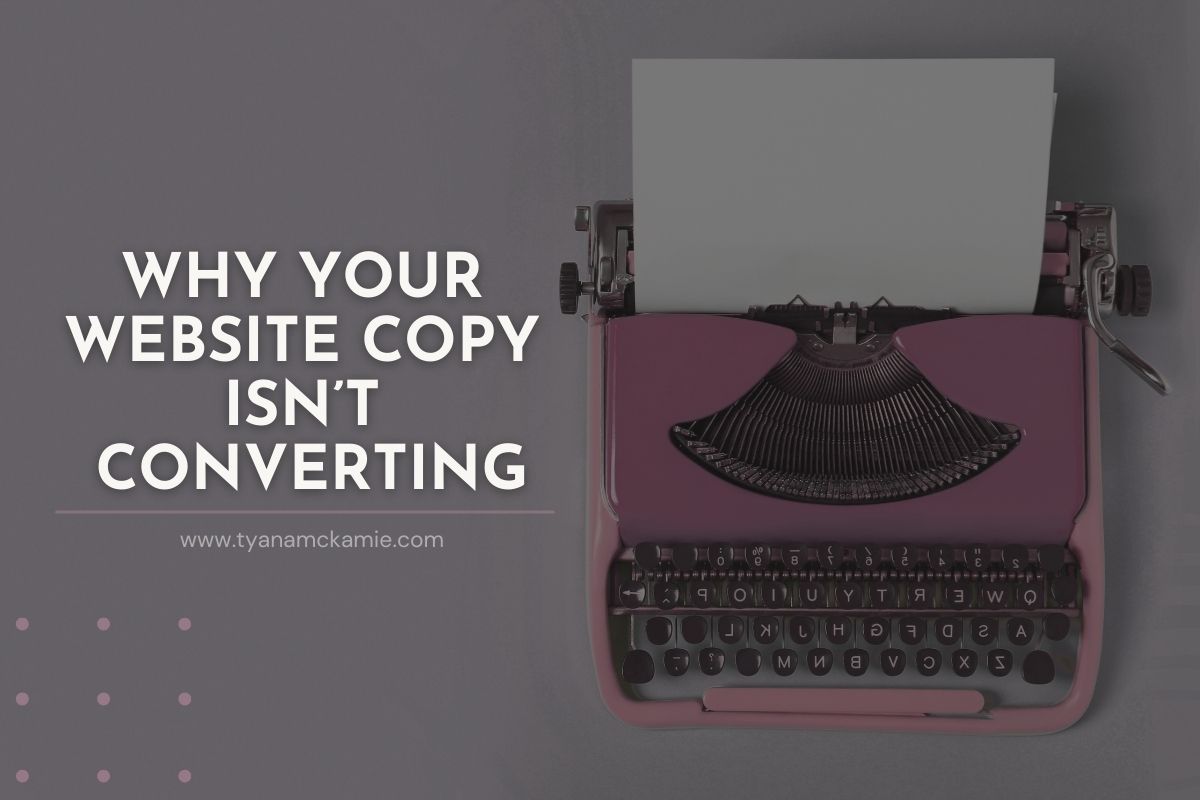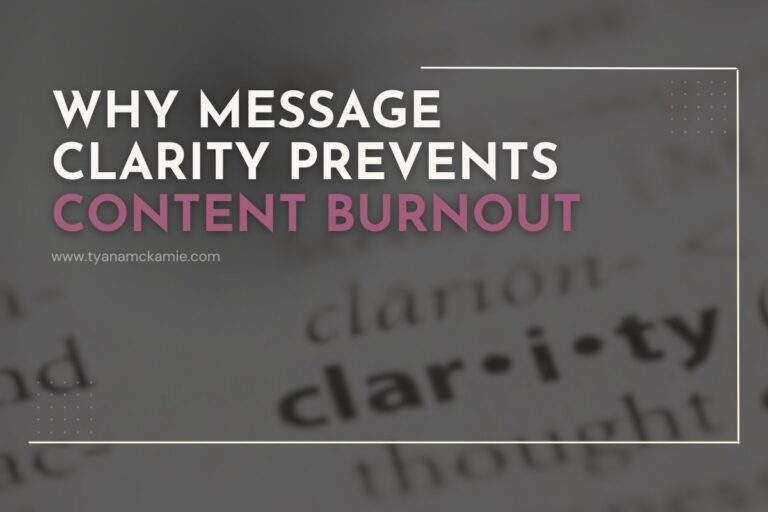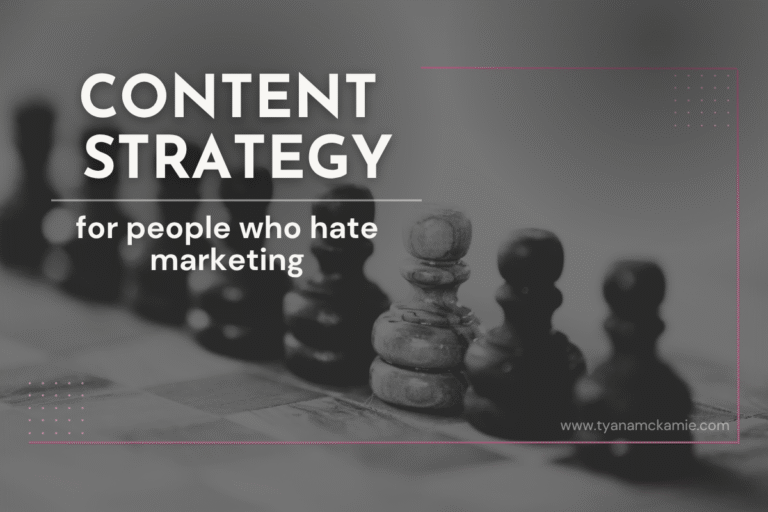Website Copy Not Converting? Here’s Why (And How to Fix It)

If your website gets 1,000 visitors a month but only converts 2 of them into clients, your website copy not converting is the problem.
I see it all the time: brilliant business owners with gorgeous websites that convert about as well as a broken shopping cart. The design is on point, the photos are beautifully on brand, but the copy? It’s talking to some imaginary person who doesn’t actually exist.
Let me guess. You did the “ideal client avatar” exercise, gave her a name (probably Sarah), decided she’s 35, has two kids, and shops at Target. Then you wrote your entire website to Sarah.
Sarah isn’t real. And that’s exactly why your website copy isn’t converting.
The “Ideal Client Avatar” Exercise Is Broken (Here’s Why)
I’m not saying audience research is pointless. I’m saying the way most people do it is completely backwards.
Traditional ICA exercises have you dreaming up demographics and psychographics for someone you’ve never met. It’s like writing a love letter to a stranger based on their dating profile. You might hit some surface-level stuff, but you’re missing the entire emotional landscape.
Your actual audience is messier, more complex, and way more interesting than any avatar you could dream up. They have specific problems, specific language patterns, and specific ways they talk about their pain points. But you won’t discover any of that by making up stories about fictional people.
Red Flags Your Website Copy Not Converting
Before we talk about fixing it, let’s figure out if your copy is actually the problem. Here are the telltale signs your website copy isn’t converting:
People compliment your website but don’t buy. “I love your site!” doesn’t pay the bills. If you’re getting lots of compliments but no conversions, your copy is probably too vague or not addressing the right pain points.
You get lots of “How much does this cost?” emails. This means your copy isn’t clearly communicating value. People only focus on price when they don’t understand what they’re getting.
Your bounce rate is high on key pages. If people are landing on your services page and immediately leaving, they’re not seeing themselves in your copy.
You’re explaining the same thing over and over in discovery calls. If every potential client needs the same clarification, your website should be doing that heavy lifting for you.
How to Research Your Actual Audience (Not Who You Think They Are)
Stop inventing people and start listening to the ones who already exist. Here’s how to fix website copy that’s not converting:
Mine your current clients. Pull up your last 10 client conversations. What exact words do they use to describe their problems? What phrases keep coming up? This isn’t about demographics, it’s about language patterns.
Scroll through Facebook groups and Reddit threads where your people hang out. Screenshot the posts that get the most engagement. Notice how they phrase their struggles and what solutions they’re desperately seeking.
Check your DMs and email replies. People tell you exactly what they need when they respond to your content. They’re literally giving you the copy.
Look at your website analytics. Which pages do people spend the most time on? Which ones make them bounce? Your current copy is already telling you what works and what doesn’t.
Check what your competitors are getting wrong. Most businesses in your industry are probably making the same copy mistakes. Look at 5-10 competitor websites and notice the patterns. Are they all using the same buzzwords? Are they all being vague about outcomes? Their weaknesses are your opportunities.
Send a simple survey to past clients. Ask them: “What was the biggest problem you were trying to solve when you found me?” and “What almost made you choose someone else?” Their answers will give you copy gold.
3 Website Copy Mistakes That Kill Conversions
Mistake #1: You’re solving problems they don’t have yet. Your copy is talking about advanced-level pain points when your audience is still figuring out the basics. It’s like offering calculus tutoring to someone who’s struggling with multiplication.
Mistake #2: You’re using your industry language, not theirs. They don’t know what “conversion optimization” means. They do know what “getting more customers from my website” means. Speak their language, not yours.
Mistake #3: You’re being too vague about the transformation. “I help entrepreneurs grow their business” could mean literally anything. “I help course creators turn their website visitors into paying students” is specific enough to make the right person think, “Oh, that’s exactly what I need.”
💡Quick Tip! Read your copy out loud and ask: Would my dream client say this? Would they feel seen? If not, you’ve got some translating to do.
The Psychology Behind Website Copy That Converts
Good copy isn’t about fancy words or clever phrases. It’s about meeting people exactly where they are mentally and emotionally.
When someone lands on your website, they’re not thinking about your credentials or your process. They’re thinking about their problem and whether you can solve it. Your copy needs to acknowledge that problem so specifically that they think, “Did you read my mind?”
This is why research matters more than creativity. You can’t write copy that converts if you don’t know what resonates.
Before/After: Examples of Website Copy That Actually Converts
✖️ Before: “I’m a marketing consultant who helps small businesses increase their online presence and drive more qualified leads through strategic digital marketing solutions.”
✔️ After: “I help local service businesses stop losing customers to competitors who show up first on Google.”
See the difference? The first version is about you and your services. The second is about their specific, painful problem and the outcome they actually want.
✖️ Before: “Our comprehensive wellness program addresses all aspects of your health journey through personalized nutrition and fitness guidance.”
✔️ After: “Finally lose the weight without giving up wine or spending two hours at the gym every day.”
The second version speaks to what they really want: results without sacrifice. It’s not about being comprehensive. It’s about being realistic.
Common Website Copy Myths That Kill Conversions
Let’s bust some myths that are probably sabotaging your website copy right now:
Myth: More words = better SEO. Google cares about relevance and user experience, not word count. A 300-word page that perfectly answers someone’s question will outrank a 2,000-word page that doesn’t.
Myth: Professional means formal. Your copy should sound like you, not like a corporate press release. People buy from people they trust, and trust comes from authenticity, not formality.
Myth: Everyone needs to understand your offer. You’re not writing for everyone. You’re writing for the people who are ready to buy. It’s okay if your copy doesn’t resonate with everyone who reads it.
Your Website Copy Should Feel Like a Conversation, Not a Presentation
Let’s not overcomplicate it. Your website copy should sound like you explaining your work to a friend over coffee. If you wouldn’t say it out loud, don’t write it on your website.
The best copy doesn’t feel like copy at all. It feels like someone finally understanding your problem and offering a solution that actually makes sense.
Stop writing to imaginary people and start writing to the real ones who are already telling you exactly what they need. Your conversion rates will thank you.
How to Fix Website Copy That’s Not Converting
- Audit your current copy using the red flags above
- Research your actual audience using the methods outlined
- Rewrite key pages starting with your homepage and services page
- Test your new copy with real people before going live
- Monitor your analytics to see if conversions improve
Remember: Website copy that converts isn’t about perfect grammar or clever wordplay. It’s about speaking directly to the right person’s problem in language they actually use.
Ready to turn your website into a client magnet? Let’s make your copy convert.


